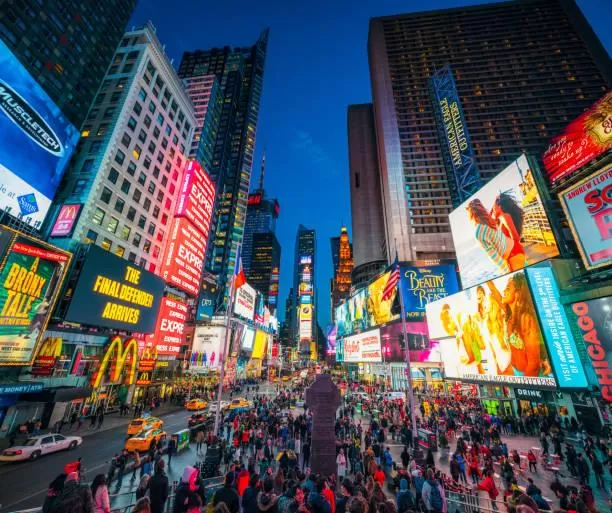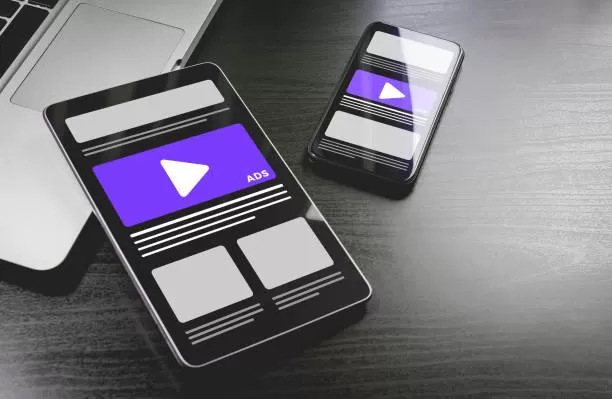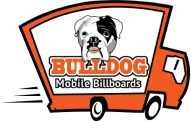Out-of-home advertising can be one of the best ways to reach your audience when you’re using marketing. OOH, also known as out-of-home advertising, means when people go out into the world, they’ll get advertisements from posters, billboards, mobile billboards, digital screens, bus stops, and more.
Outdoor digital advertising has progressed immensely year after year due to further advancements in technology. Out-of-home advertising has not only grown creatively but also smarter and more responsive. This has made businesses, people, and messages get across more efficiently and easily with today’s technological advancements.
When we dive into the world of Programmatic OOH, this offers another innovative and appealing way to purchase and sell OOH advertising through programmatic technology which in turn automates the delivery of the ad and the overall optimization of the ad campaign to find ways to better the ad that will drive results.
Below we’ll cover what exactly programmatic OOH is, the benefits, and difficulties, and how it works in order for you to create an engaging and successful programmatic OOH campaign. We’ll also share with you examples of some winning programmatic OOH campaigns and how Bulldog Mobile Billboards is leading the way through the use of digital mobile billboards that engage with audiences and provide memorable experiences.
Understanding Digital Out-of-Home (DOOH) Advertising
Before we get started with programmatic OOH we must know what digital out-of-home (DOOH) advertising is and the difference between the two.

DOOH advertising is out-of-home advertising that uses digital methods to show marketing campaigns, messages, or advertisements. Traditional out-of-home advertising is typically static, such as vinyl on a mobile billboard truck or a poster. DOOH, however, allows flexibility in displaying messages. You can upload many different messages to digital screens without having to worry about changing or re-printing materials like you would with traditional out-of-home advertising.
You can even think about changing your campaign on DOOH depending on the weather, events around the area, your audience passing by, and much more. Most advertising and marketing campaigns have moved towards DOOH due to lower costs and technological advancements.
DOOH displays also have many benefits, such as the screens being bright, easily noticeable, and adding an updated branding look to your campaign and overall image. You can have videos or images flash before your viewer’s eyes to display the exact message you would like to get out to your audience in real-time.
DOOH advertising is becoming increasingly more available and used across the world with digital presence taking the forefront in people’s minds. That’s why most people choose our LED digital mobile billboard when it comes to their advertising campaign. Check out the reviews for yourself here!
What Is Programmatic Advertising?

Now that you understand the basics of OOH and DOOH it’s time to dive into programmatic advertising. First, let’s find out the meaning behind programmatic advertising, so we can take full advantage in our advertising or marketing campaign. Programmatic advertising provides a different way of purchasing advertising space that is automated or uses AI or types of machine learning. This way helps many advertisers to be able to sift through audience data, determine the best placements for their ads, and sell digital ad placements in minutes.
One of the best advantages of programmatic advertising is the amount of time it saves. Many advertisers are able to put up their ads and purchase ads without having to deal with long contracts and negotiations. This helps to reduce the paperwork across all parties and allows advertisers to put up their ads quickly and easily. Programmatic ads also help to decrease the cost of ad spend, allowing advertisers to save or redistribute their budget into working campaigns to get the best results.
Read Also: Billboard Advertising 101: Strategies for Success
What Is Programmatic OOH Advertising?
Now that you have an understanding of what programmatic advertising is, let’s go deeper into what programmatic OOH advertising is. Programmatic OOH advertising is the process of automatically purchasing, selling or delivering out-of-home advertisements to your audience.
However, the main difference between typical programmatic advertising and programmatic OOH advertising is the fact that your programmatic OOH advertisements will appear in the real world (think of Times Square) as opposed to one of your devices, like your laptop, phone, or tablet.
The major advantage when it comes to programmatic OOH advertising is the fact that these ads can not be blocked like traditional online ads. They are right there in front of your audience as they walk, drive, or pass by, unable to swipe or block the ad from the feed in their mind. This, in turn, can open up new doors for your business, marketing campaign, or overall message by getting it out to audience members you may not have thought about.
You may dial in your targeting for your message out on the digital screens in the world for specific events, seasons, or even down to the time of day. For example, you could run a programmatic OOH ad for a beverage with a display in the background related to the event. For instance, if a soccer or football match is in town, maybe you display your ice-cold beverage in a soccer or football scene.
This will target your audience and the things happening in their community that they can relate to, making your message more effective and relatable. Programmatic ooh advertising also allows you to update and optimize your message further by doing it in real time, so there are no delays or mixed messages with what’s happening in your target audience’s location.
Read Also: What is Lift Analysis and How is it Calculated?
How Programmatic OOH Works and Enhances Targeting
Automated Out of Home (OOH) advertising simplifies buying and selling various ad space through platforms and real time bidding. This approach makes ad placements more efficient and targeted by incorporating data such, as location, demographics, and real time conditions. Advertisers can set preferences like location and audience characteristics allowing the system to bid on ad spaces automatically. Dynamic creative optimization enables ads to be customized based on context enhancing their relevance and engagement.
Key improvements in targeting include;
- Location-based Targeting; Uses GPS and mobile data to target ads in areas where the target audience is likely present.
- Audience Segmentation; Utilizes detailed behavioral data to create focused campaigns tailored to specific audience segments.
- Contextual Relevance; Displays ads at times and locations for increased relevance and effectiveness.
- Efficiency and Flexibility; The automated process allows for adjustments based on performance data or market shifts enhancing campaign management.
- Enhanced ROI; Advanced targeting capabilities result in engagement rates and improved campaign performance maximizing return on investment.
Programmatic OOH combines the precision and measurability of advertising, with the visibility of advertising enabling advertisers to effectively reach specific audiences with high relevance and impact.
Read Also: 2024 as a Milestone for the OOH Advertising Evolution
Successful Examples of Programmatic OOH
When Out of Home (OOH) advertising is paired with technology it can lead to the development of effective and innovative campaigns. Programmatic OOH involves the automated purchasing, selling and optimization of OOH advertising through software enabling advertisers to target audiences in an efficient manner. Below are some instances of OOH campaigns;
- McDonald’s Weather Responsive Campaign; McDonald’s utilized programmatic OOH to showcase menu items based on the prevailing weather conditions. For example, on warmer days their advertisements featured ice cream products while on colder days they promoted coffee and warmer food options. This time the weather-responsive campaign allowed McDonald’s to offer products to their audience enhancing engagement and boosting sales.
- Spotifys Data Driven Initiatives; Spotify has leveraged programmatic OOH for a variety of data-driven campaigns. One prominent example is their “Wrapped” campaign, at the end of each year which utilizes data analysis to create billboards displaying user statistics and trends such as top songs, genres, or artists, in specific locations. These initiatives not only engage audiences on a level but also showcase Spotify’s data capabilities and personalized offerings.
- Coca-Cola’s “Share a Coke” Campaign; Coca-Cola brought its known “Share a Coke” initiative into the realm by incorporating programmatic OOH. Through the fusion of media and digital billboards Coca-Cola showcased. Messages provided by users in real time. This interactive strategy enabled consumers to connect with the brand fostering a sense of connection and promoting engagement, on social media platforms.
- Pepsi Max’s “Unbelievable” Campaign; Pepsi Max utilized programmatic OOH for its campaign by installing reality screens at bus shelters. These screens displayed feeds of the street scenery with added surprises like invasions or towering robots. This campaign not only grabbed attention from people passing by but also gained viral traction online significantly boosting brand interaction and visibility.
- British Airways #Lookup Campaign; British Airways introduced the #Lookup campaign employing technology to detect when a BA aircraft was flying overhead showcasing flight details like number and destination on digital billboards. This not only highlighted the airline’s route network but also delivered a magical experience for viewers linking digital advertising to real-world moments in a meaningful manner.
These instances illustrate how programmatic OOH can be creatively utilized to elevate engagement levels, customize advertising content and bridge the gap between physical advertising realms.
Success is about using data and technology to develop engaging, contextually fitting, and captivating campaigns.
Read Also: Choosing the Perfect Spots for Billboard Advertising Success
Challenges and Considerations
While there are many benefits and advantages of programmatic OOH advertising, there are also challenges as well. There has been an increase in regulations and limitations on the use of certain types of data. You must get the consent of the people being targeted and their data, so it cannot be hacked or stolen.
Also, there have been some challenges regarding the purchasing and selling process. With all the various platforms out there, each has its own systems, processes, statistics, and protocols, which can make it hard to gather and store the needed data and information.
However, these methods once again continue to get better and easier as we advance in technology, especially with the use of AI. Overall programmatic OOH advertising offers an incredibly unique and new way to set your message apart from the clutter and overuse of online ads.
If you’re looking to reach your audience in a new and exciting way, take a look at our various campaigns on our website at BulldogBillboards.com and please feel free to reach out to me, Rod Collins, with any questions that may come up at (214) 724-2729.



